Panax trifolius – Dwarf Ginseng
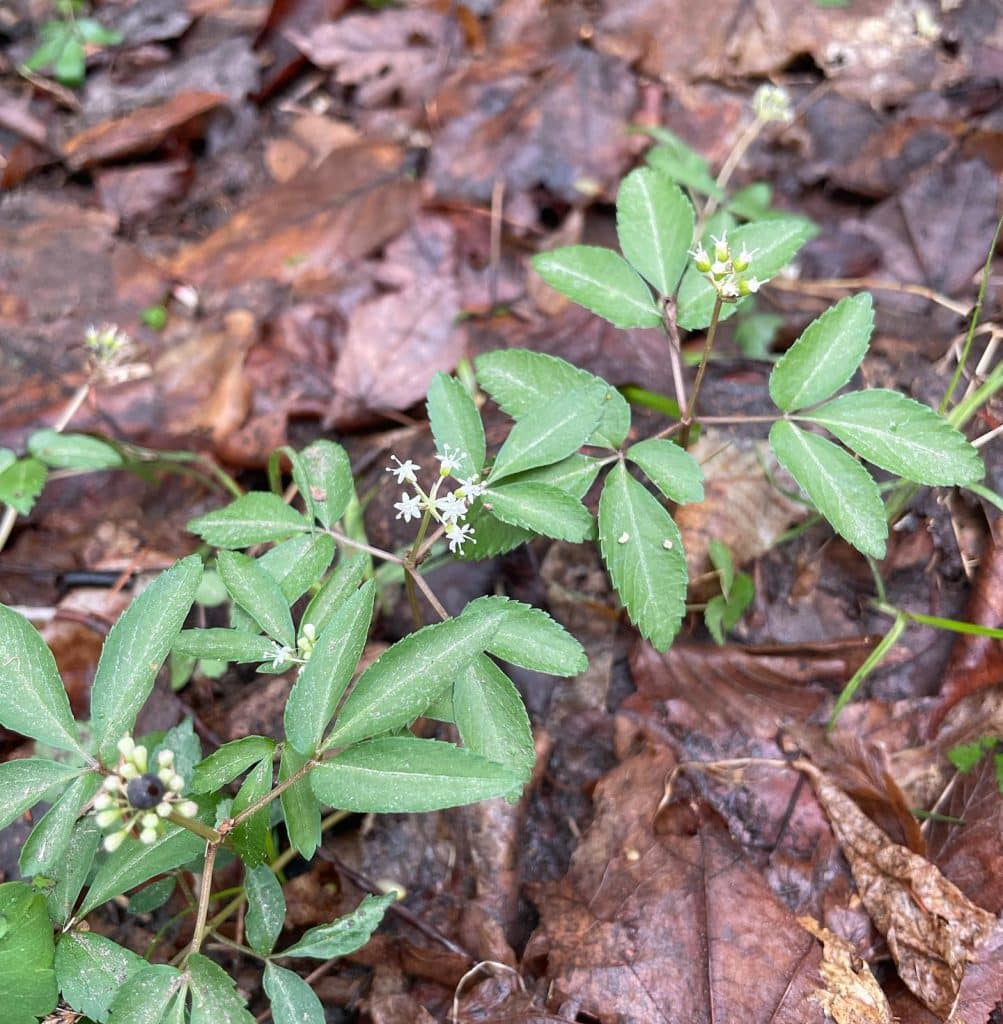
Dwarf ginseng (Panax trifolius) is a native spring ephemeral. Dwarf ginseng, also known as “groundnut”, can be found in moist areas along forested creeks. It can form dense colonies in ideal conditions. Dwarf ginseng has three leaves that are arranged in the shape of a triangle. Each leaf is made up of three or […]
Phytolacca americana – Pokeweed

Pokeweed (Phytolacca americana) is a native perennial that is a traditional food of Native Americans and Southerners. Pokeweed can be found in fields, roadsides, and forest edges. It prefers disturbed soil in partial shade to full sun. Pokeweed starts to send up shoots in mid-spring. Shoots should only be harvested when they have tender, […]
Cardamine concatenata – Cut-leaf Toothwort
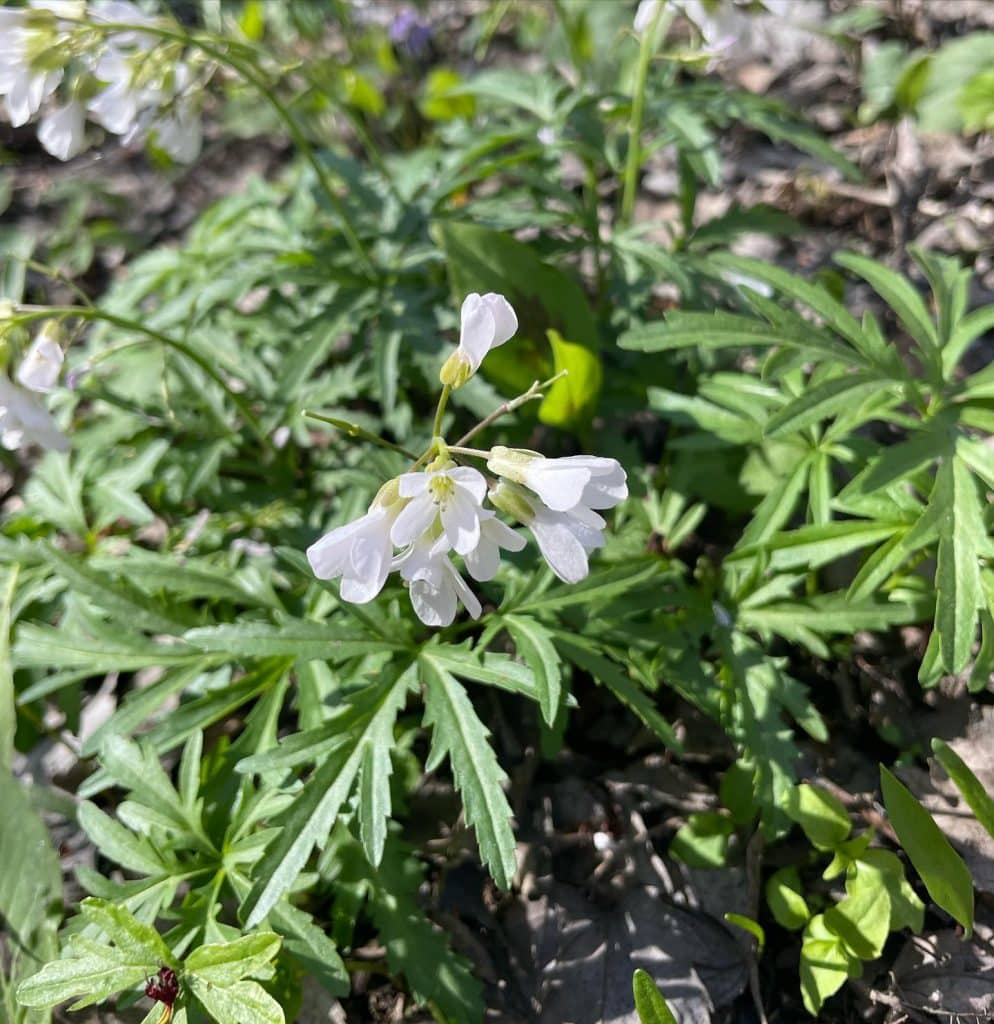
Cut-leaf Toothwort (Cardamine concatenata) is a native, edible ephemeral in the mustard family. Cut-leaf toothwort can be found in hardwood forests with rich soil. They are often found growing near other spring ephemerals such as Virginia Spring beauty and trout lily. They can form dense colonies from their tubers. Cut-leaf toothwort has three deeply […]
Allium tricoccum – Ramps
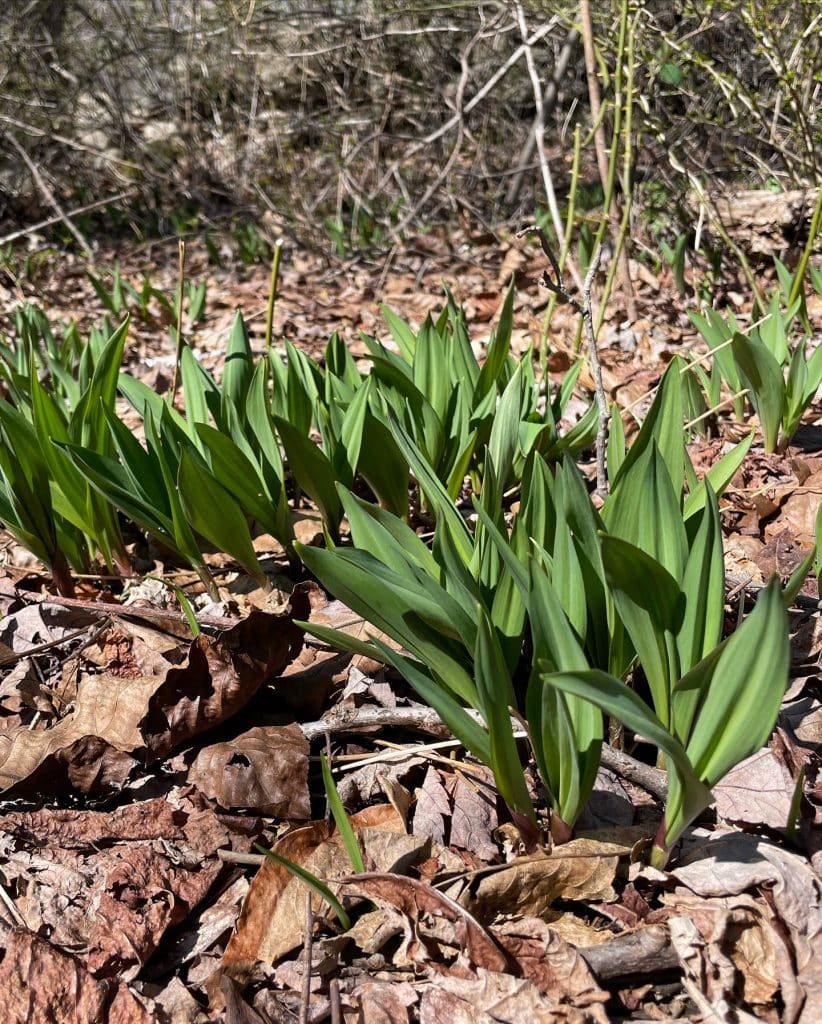
Ramps (Allium tricoccum) are a native species of onion that can be found late March- early May in CT. Ramps can be found in woodlands with rich, moist, well-drained soil. They usually grow under trees but get full sun since the leaves are not yet out. Ramps have 1-3 leaves that attach to a white […]
Viola sororia – Common Violets
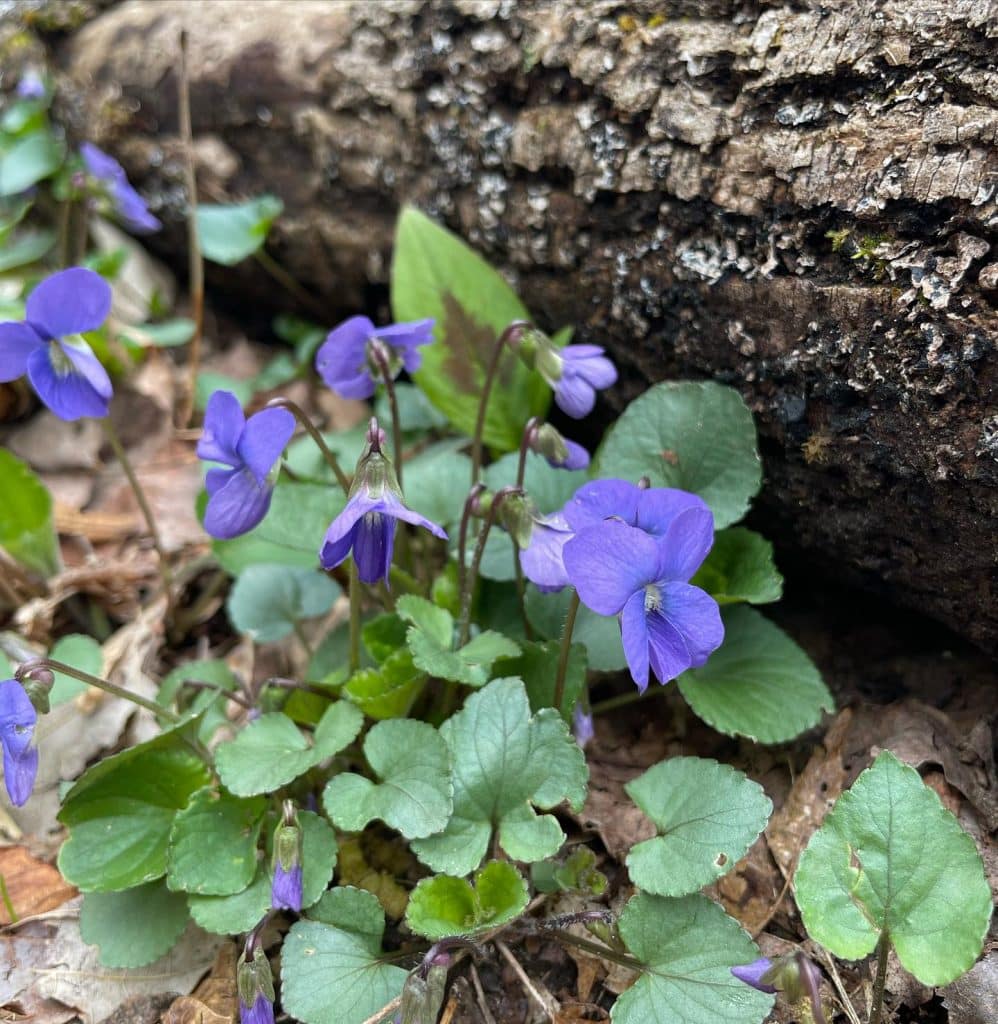
Common Violets (Viola sororia) are a native perennial that produce one of the first spring flowers. Common violets prefer moist soil with partial shade. They are often found under deciduous trees. Common violets have heart-shaped leaves with small, pointed teeth at the leaf margins. Flowers have five petals that are usually purple with some […]
Heracleum maximum – Cow parsnip
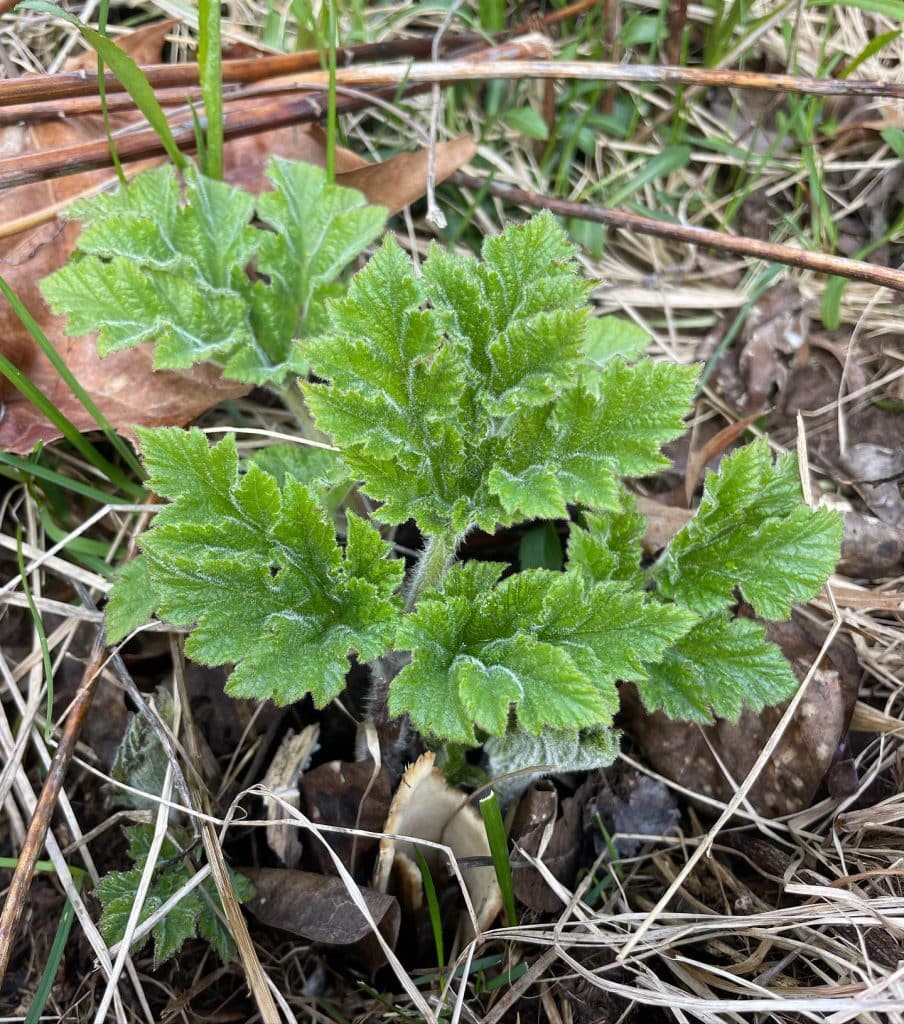
Cow Parsnip (Heracleum maximum) is a native perennial in the carrot (Apiaceae) family. Cow parsnip can be found along rivers, swamps, and forest edges. It prefers partial to full sun. Cow parsnip has 3-part, alternate, compound leaves with irregularly toothed and lobed margins. The leaves can grow to be 2 feet across at maturity. […]
Asarum canadense – Wild Ginger
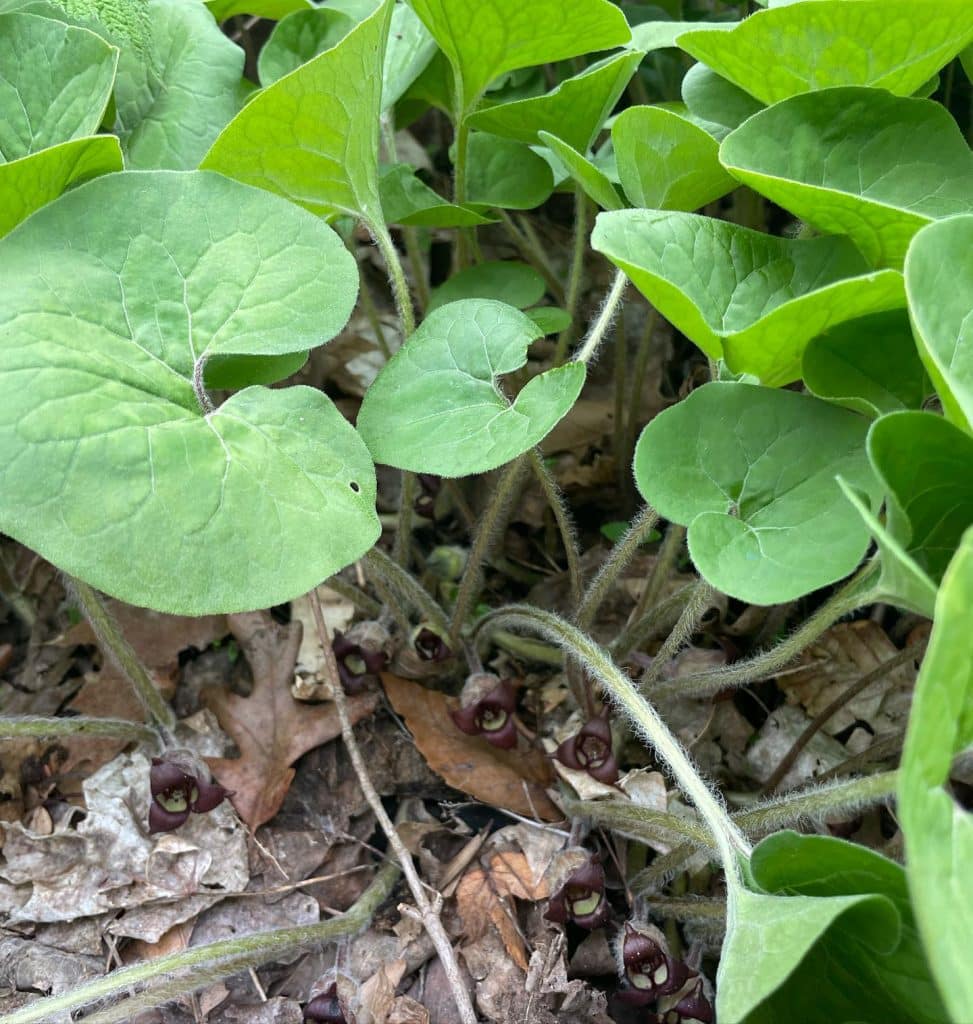
Wild ginger (Asarum canadense) is a native perennial that can be found in moist woodlands. Wild ginger often forms dense colonies by rhizome. It can be found at the base of rocky slopes and along rivers. It prefers partial to full shade. Wild ginger has heart-shaped leaves that are usually in pairs. It produces […]
Allium canadense – Wild Onion
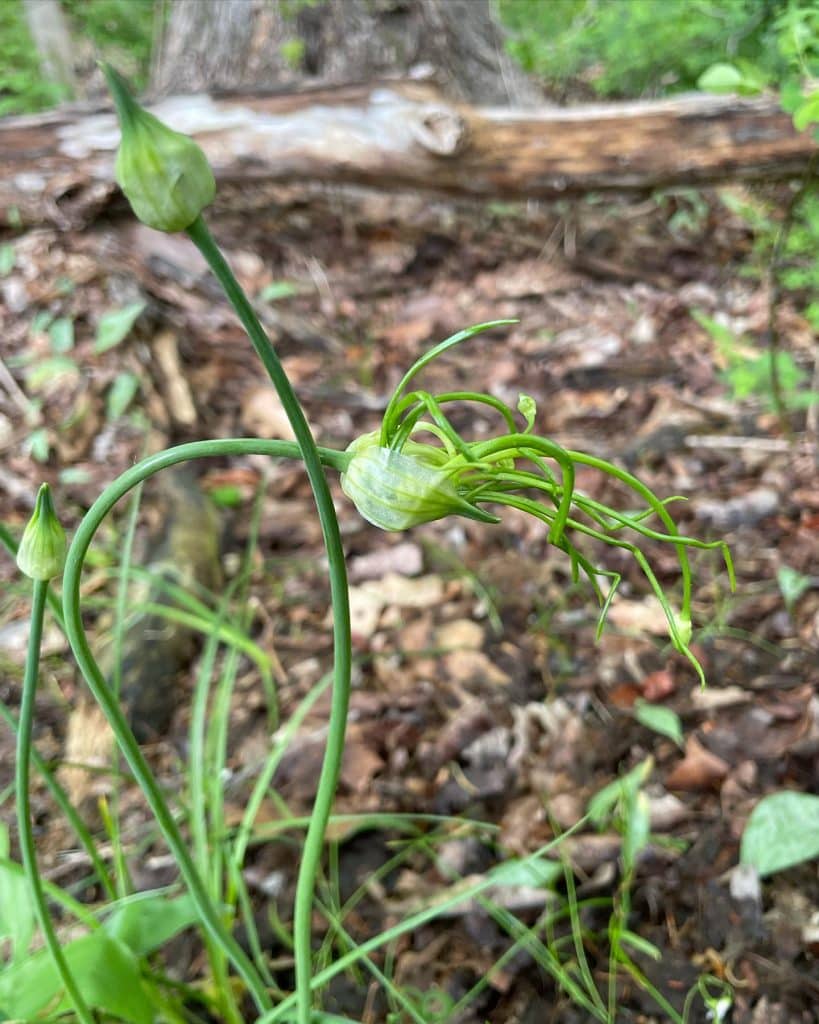
Allium canadense (Wild onion) is an edible native perennial. Wild onion, also known as “meadow garlic”, can be found in meadows, fields, forests, and lawns. It has solid leaves and grows from a bulb. Each flowering plant will have three leaves. The flowers bloom in late spring to summer and are white or pink. The […]
Comptonia peregrina – Sweet Fern
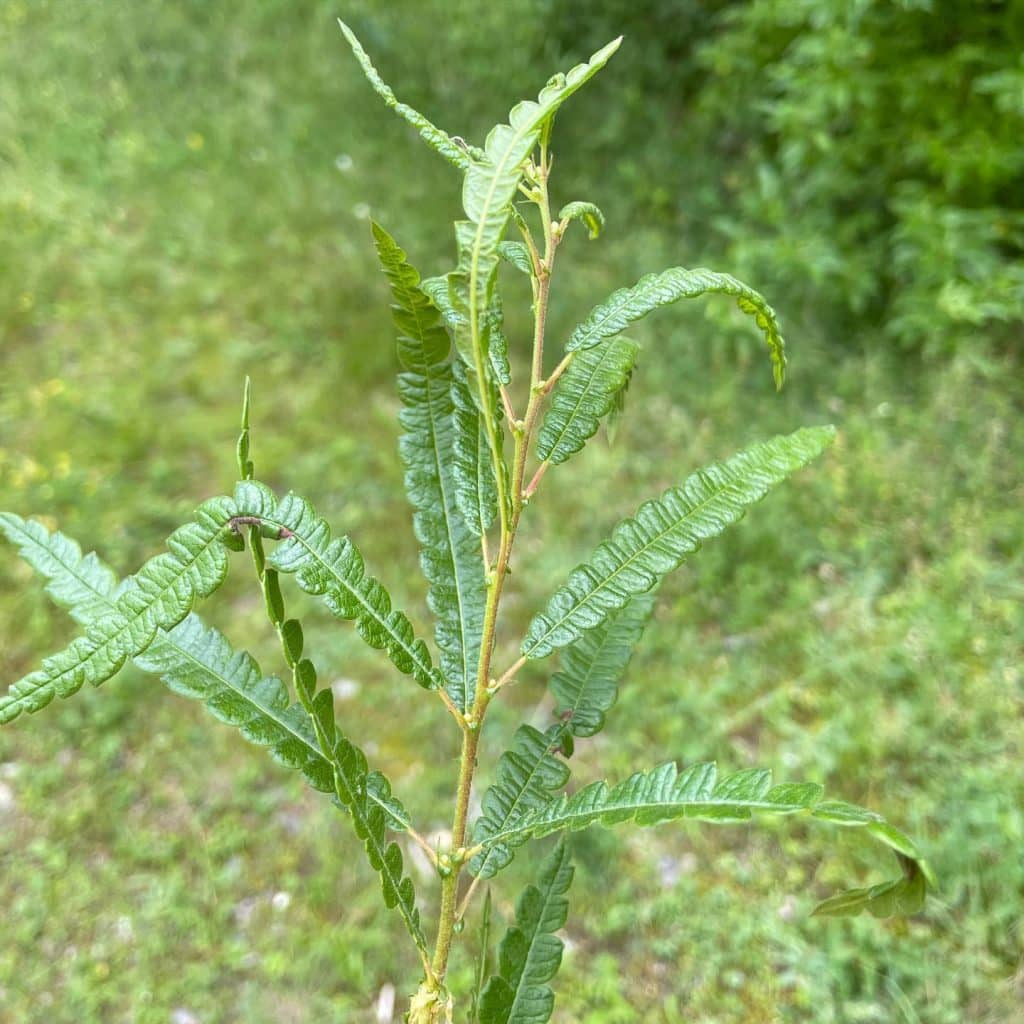
Sweet Fern (Comptonia peregrina) is a native shrub related to the bayberry plant. Sweet fern is not a true fern, as it produces seeds and flowers, unlike ferns which reproduce using spores. Sweet fern leaves have a nice aroma, but are tough, so are best used to flavor liquids. The leaves should then be […]
Hamamelis virginiana – Common Witch Hazel
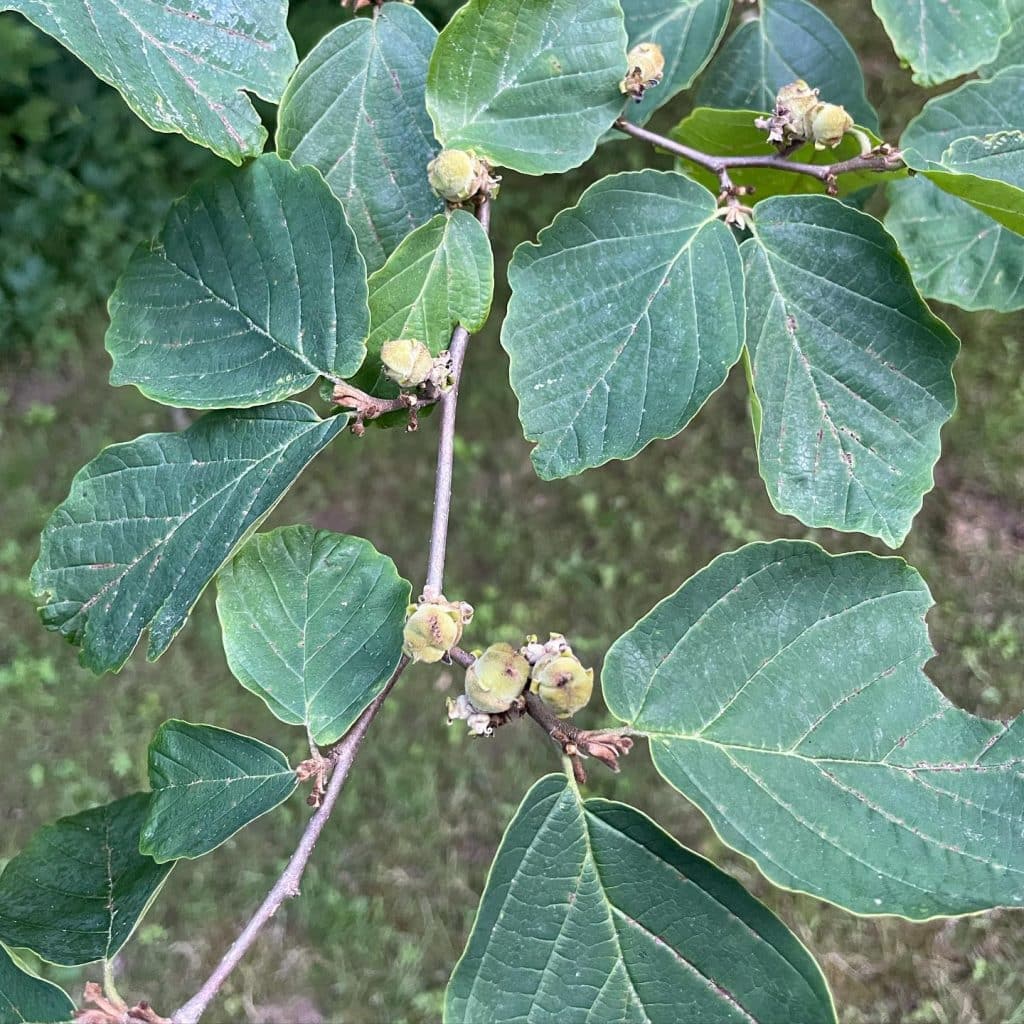
Common witch hazel (Hamamelis virginiana) is an abundant native plant in New England with many topical uses. Witch hazel was first mass produced in the mid 1800’s in Essex, Connecticut. The leaves have an asymmetrical base and serrated edges. The plant uniquely blooms in autumn. Astringents made from witch hazel have been used to treat […]
Cardamine diphylla – Two-leaved Toothwort
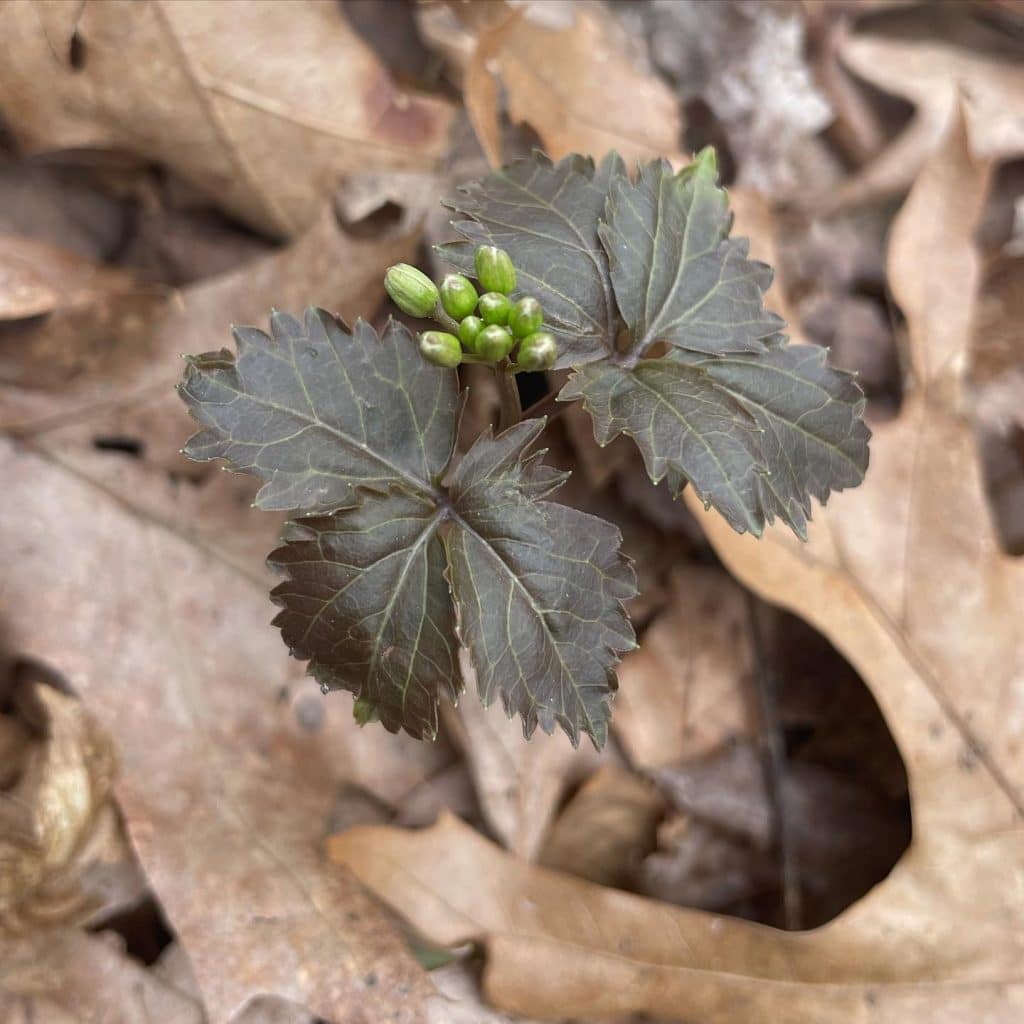
Two-leaved Toothwort (Cardamine diphylla) is a native, edible plant in the brassicaceae (mustard) family. From the root of Two-leaved Toothwort emerges 2 leaves, each with 3 coarsely toothed leaflets. The plant emerges early in spring and blooms from mid-April to mid-May. Two-leaved Toothwort can be found in most of Eastern North America. It often […]
Erythronium americanum – Trout Lily
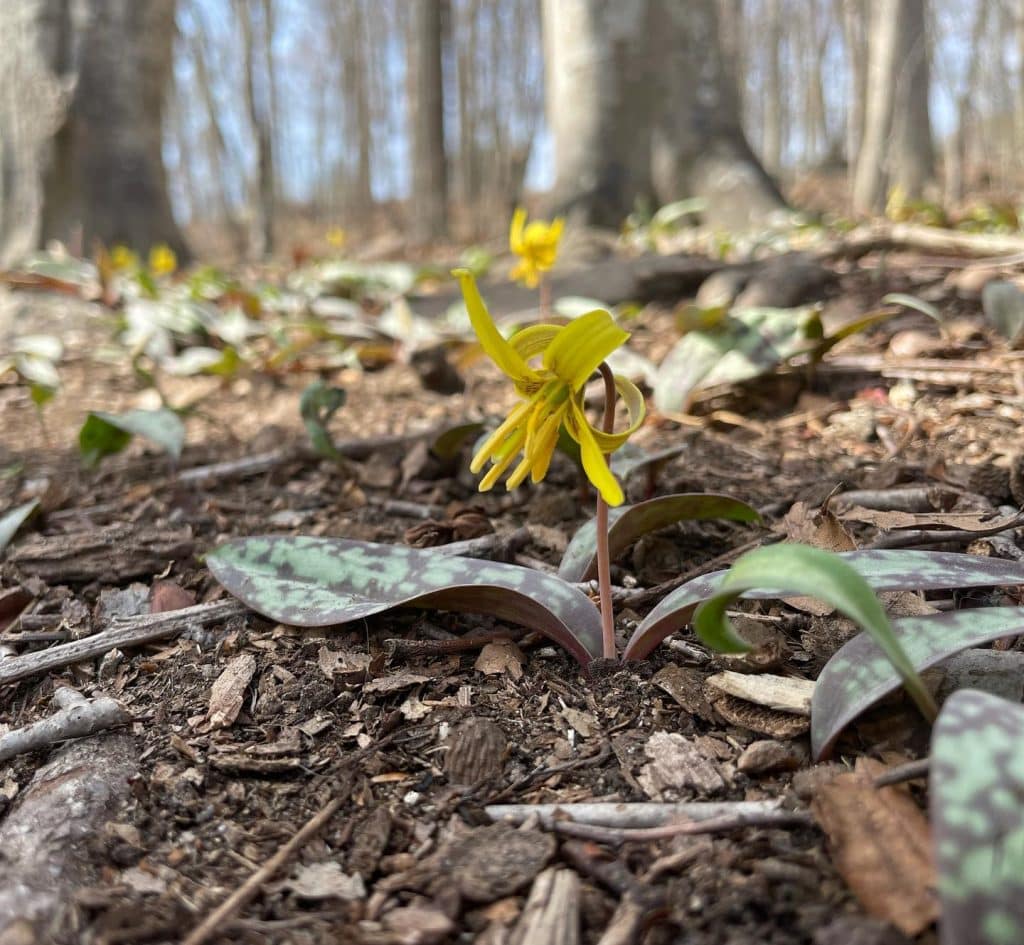
Trout Lily (Erythronium americanum) is a native, edible ephemeral that blooms in April in Connecticut. Trout lily has purple mottled leaves and a flower with 6 petals. The color of the flower varies depending on the species of trout lily. Trout lily leaves and flowers can be added raw to a salad. Only a […]
Opuntia humifusa – The Eastern Prickly Pear
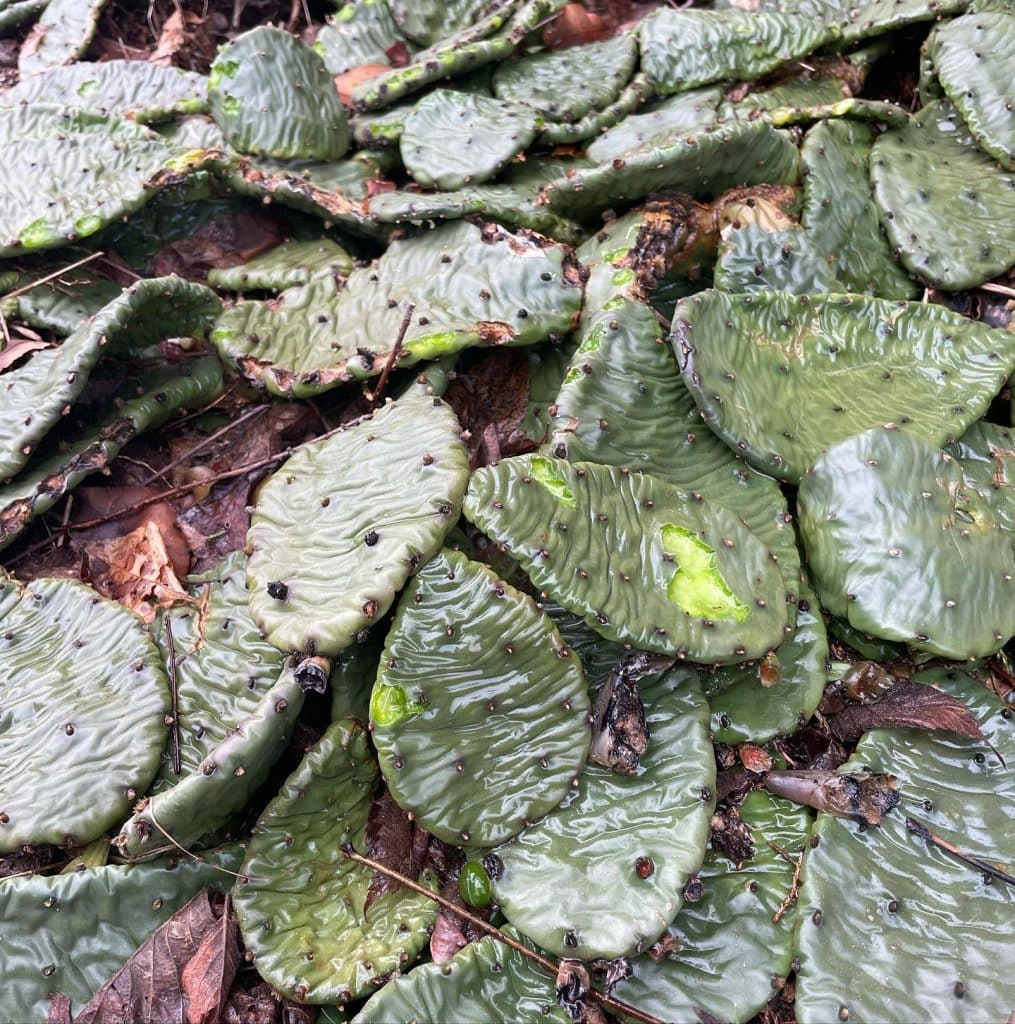
Eastern Prickly Pear (Opuntia humifusa) is a cactus that is native to Connecticut. The Eastern prickly pear can be found in sunny, dry environments. It prefers sandy, rocky soil and tends to form large colonies. The Eastern prickly pear can survive freezing temperatures due to high levels of glucose in its cells. The cactus has […]
Urtica dioica – Stinging Nettle
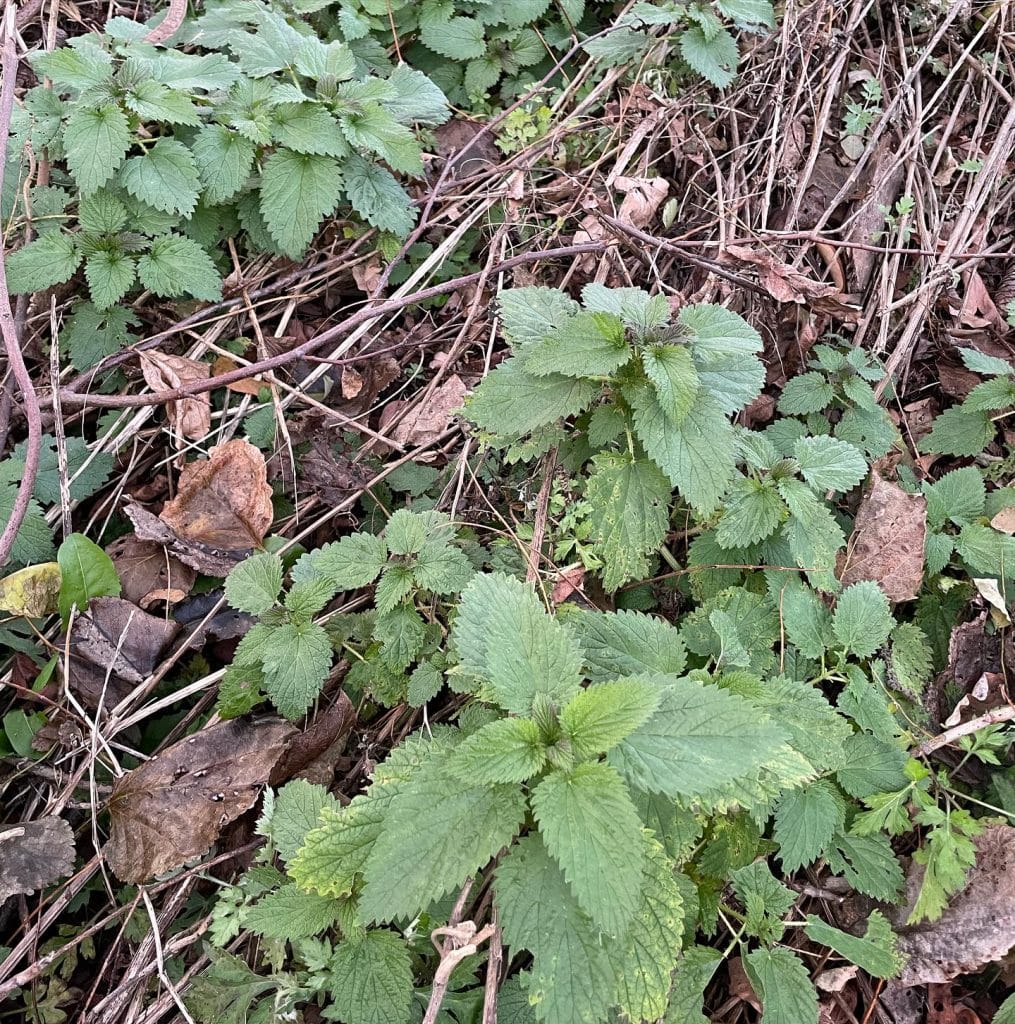
Stinging nettle (Urtica dioica) is a highly nutritious plant that can be found throughout the continental United States. There are multiple subspecies of stinging nettle. American stinging nettle (Urtica dioica subsp. gracilis) is native to North America. Stinging nettle has opposite, heart-shaped leaves with toothed margins. The plant produces small gray-green flowers that dangle like […]
Morella pensylvanica – Northern Bayberry
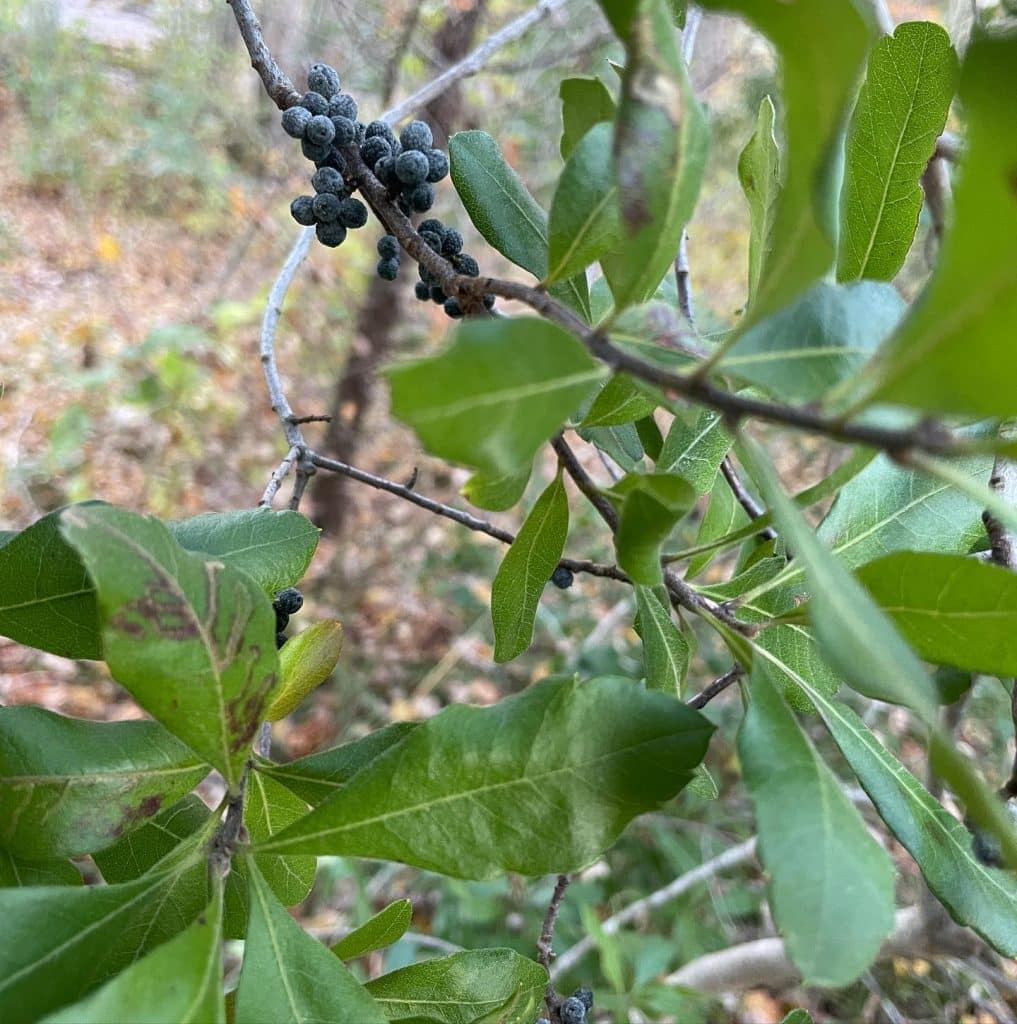
Northern Bayberry (Morella pensylvanica) is a native shrub that can be found on coastlines and in swampy woodlands. Northern bayberry has alternate, waxy leaves which have a few shallow teeth at the tip end. The shrubs produce clusters of bluish gray fruits in the fall. In the spring, the tender leaves can be used fresh […]
Maianthemum racemosum – False Solomon’s Seal
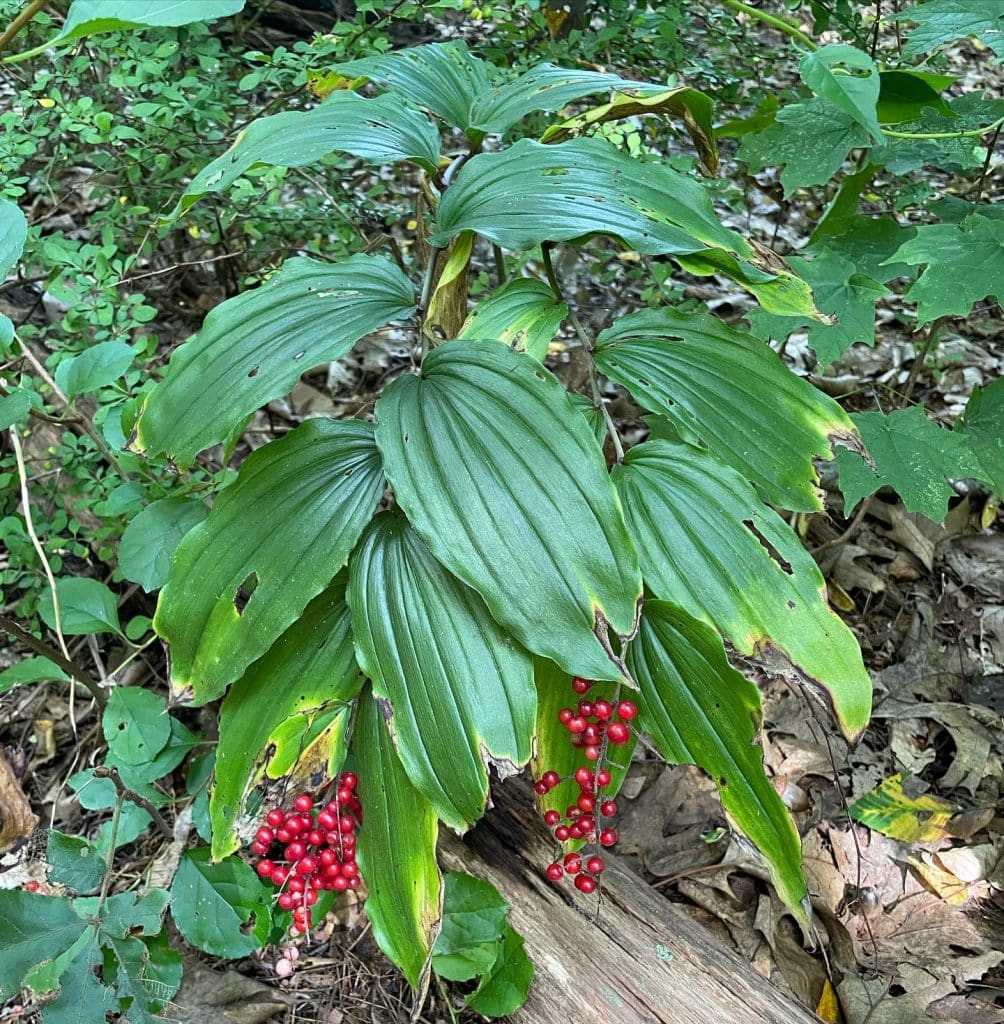
False Solomon’s Seal (Maianthemum racemosum) is a native woodland plant with edible berries. False Solomon’s seal has a long, arching stem and berries that turn bright red in late summer. It is in the Asparagus family. Berries are edible, but bittersweet. Berries should be eaten in moderation as large quantities can have a laxative effect. […]
Lobelia inflata – Indian tobacco
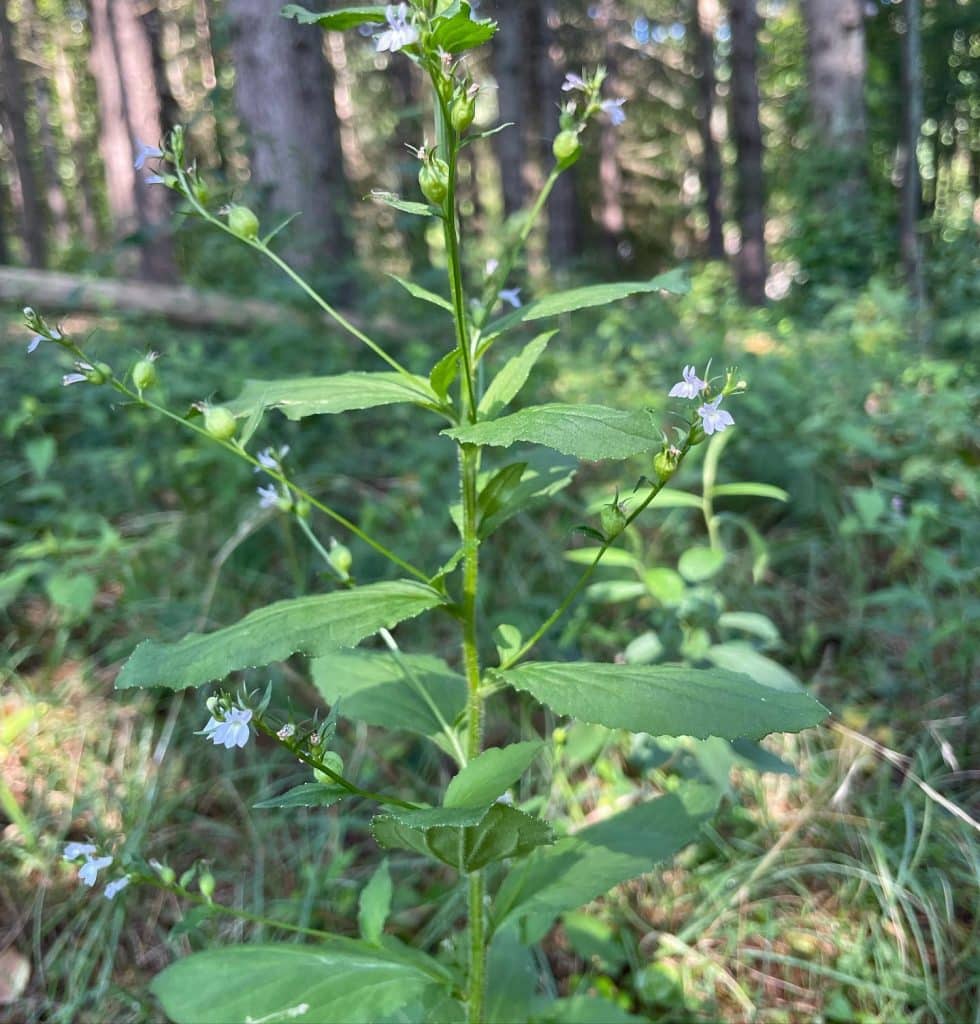
Indian Tobacco (Lobelia inflata) is a native plant that blooms from mid-summer until the first frost. Indian tobacco has alternate, finely toothed leaves. The small flowers have an upper two-lobed lip and a lower three-lobed lip. Fertilized flowers develop into inflated seed capsules. Indian tobacco was occasionally chewed or smoked by Native Americans as a […]
